
“Red, blue, red, blue…” You watch your child lining up toy blocks, repeating colors in a quiet rhythm. It looks like simple play, but it’s actually their first experience with math pattern games, where logic and imagination meet.
Long before equations or fractions, these small repetitions help children notice order and change. Through play, they begin to build what educators call early math logic — the ability to recognize relationships, predict outcomes, and create patterns of their own.
What Math Pattern Games Teach Beyond Play

In early math learning, pattern games aren’t about memorizing sequences. They’re about thinking in patterns — finding meaning in repetition and structure.
This kind of thinking shapes how children later approach problem-solving in reading, math, and even creative arts.
Let’s look at a few examples from Think Academy’s PreK–G1 math pattern activities, where play naturally turns into reasoning.
🎨 1. The Color Pattern Game
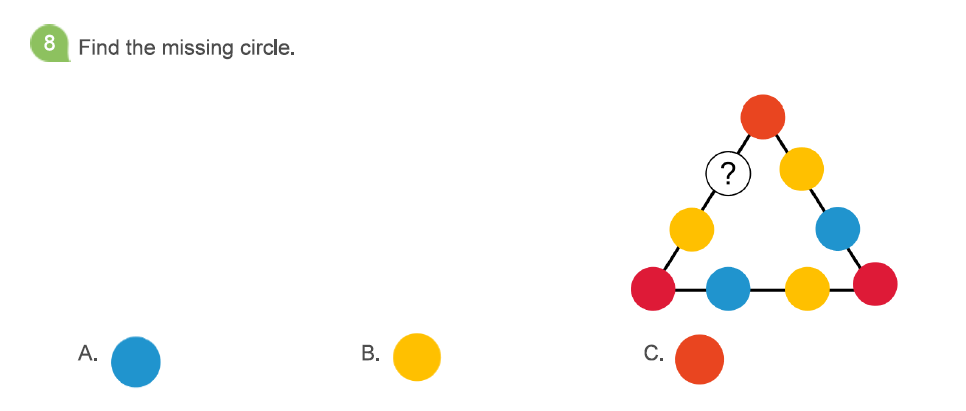
“Find the missing circle.”
Red, yellow, blue… red, yellow, ____?
What feels like a guessing game is actually a child’s first lesson in logic.
They learn that rules repeat, that predictability feels safe, and that noticing what’s missing is just as important as seeing what’s there.
🦁 2. The Animal Order Game

“There are two animals in the wrong position. Circle them.”
Among a row of lions and tigers, two don’t follow the rule.
Here, children learn to analyze — to test whether a pattern holds true.
It’s the beginning of critical thinking: asking why something doesn’t fit.
And that, more than getting the answer right, is the heart of mathematical curiosity.
🥕 3. The Food Pattern Game
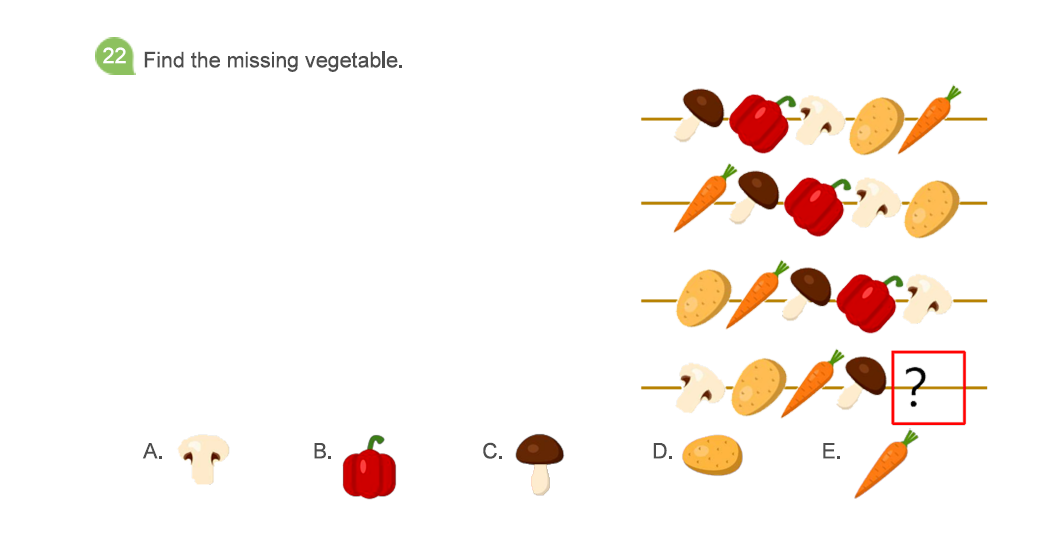
“Find the missing vegetable.”
Carrots, mushrooms, peppers… what comes next?
Through these visual math pattern games, children connect abstract ideas to familiar objects.
They realize that math isn’t confined to numbers — it’s everywhere: in food, toys, music, and movement.
If you’ve ever wondered why some children later struggle to follow multi-step word problems, the reason often begins here — with early pattern recognition.
For a deeper look into how reading structure affects math comprehension, visit “Why Kids Struggle to Read Math Problems — ITA Method Insights.”
When Math Patterns Turn into Number Logic
As children grow, pattern games evolve from colors and shapes to number relationships.
They start to see that math is not random — it’s structured, rhythmic, and predictable.
4. The Fruit Trading Game — Caribou Math Contest, 2022
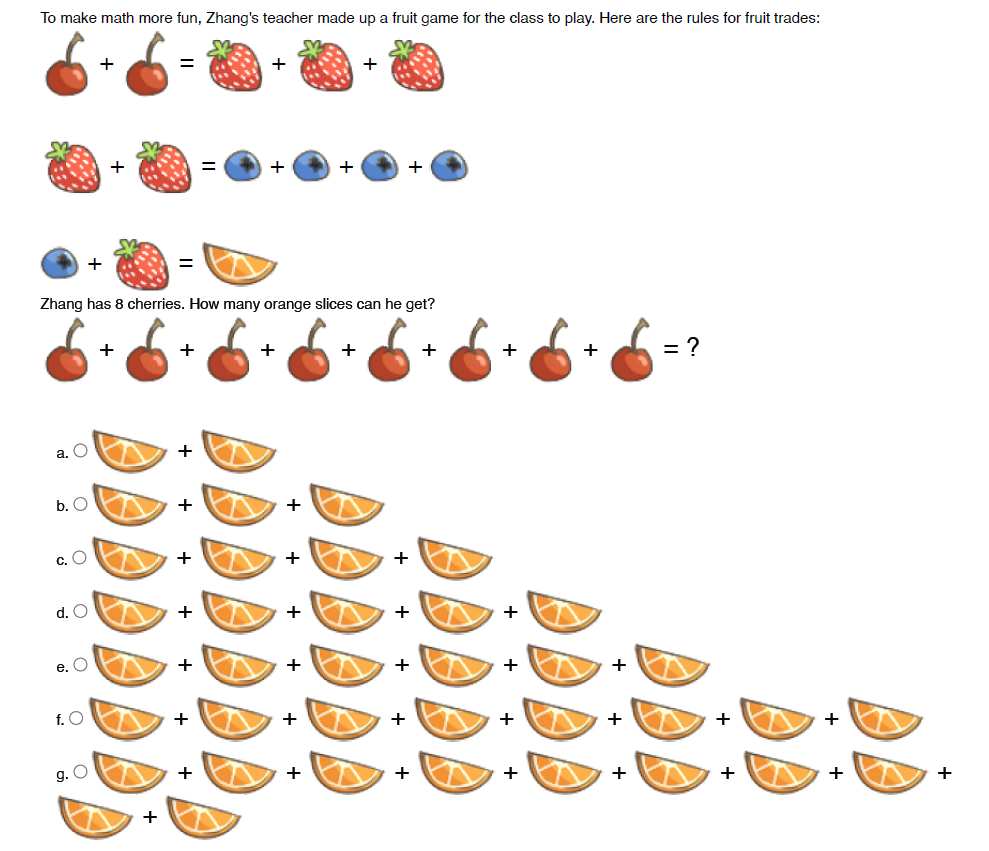
In this puzzle, Zhang’s class plays a fruit exchange game:
Two cherries equal one strawberry, one strawberry equals one orange slice…
If Zhang has eight cherries, how many orange slices can he trade for?
The child must translate pictures into relationships — realizing that each fruit stands for a number and each trade follows a rule.
This gentle leap from pictures to logic marks their first encounter with algebraic thinking.
This is where Think Academy’s G1–G3 Math Foundation Program focuses — bridging what children see with how they reason through math pattern games and logic puzzles.
From Math Patterns to Problem-Solving
By Grades 2–3, patterns become more than repetition — they become tools for reasoning and prediction.
🔵 5. Growing Dot Pattern — Caribou 2017
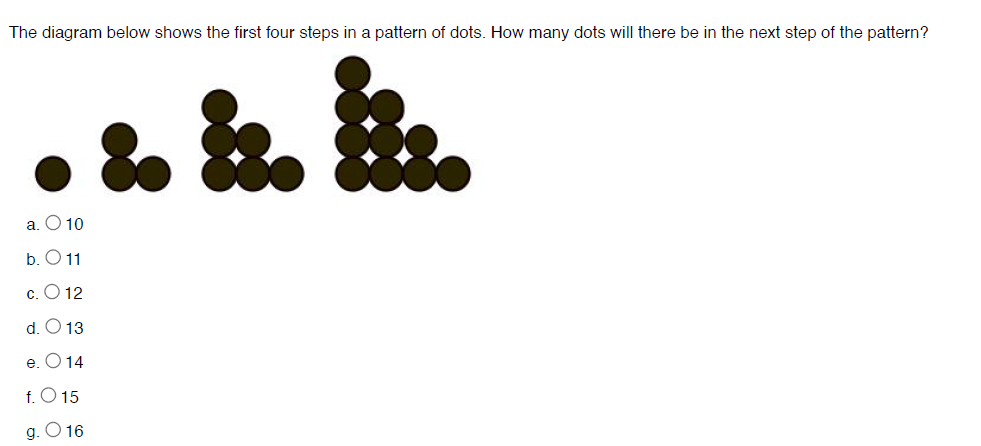
A child sees four diagrams of dots forming triangles:
1 → 3 → 6 → 10 → ?
To find the next step, they must observe the growth rule: each new figure adds one more row than before.
It’s not rote learning — it’s visual reasoning.
This simple number pattern game helps them sense how addition builds into multiplication and geometry later on.
🎨 6. Painting Pictograph — Caribou 2019
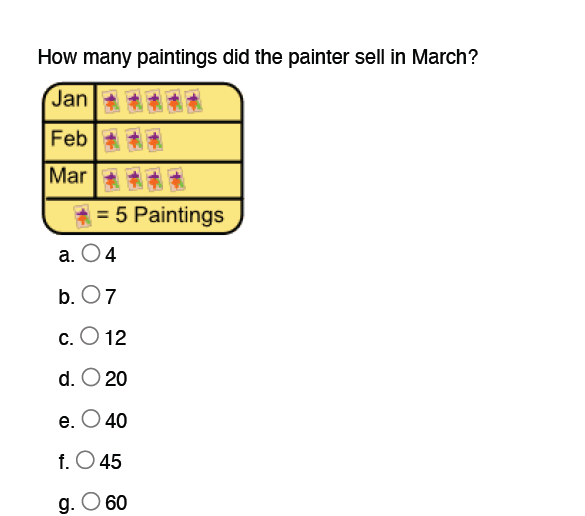
A painter’s monthly sales are shown using small icons — each picture equals five paintings.
“How many did they sell in March?” the problem asks.
Children discover that patterns can represent data.
They realize numbers can be seen as pictures, and meaning can be built from symbols — the essence of quantitative reasoning.
How Parents Can Continue Math Pattern Games at Home

You don’t need worksheets to nurture early math logic — everyday life is full of pattern games for kids.
- Clap-Stamp Game: Clap twice, stamp once — then ask, “What comes next?”
- LEGO Color Challenge: Build a red-blue-yellow tower; let your child invent a new pattern rule.
- Snack Sequences: Alternate apple slices and crackers; can they guess the next piece?
- Laundry Sort: Arrange socks by size or color, and explain the sequence together.
These small math pattern activities teach children to organize, predict, and think systematically — without ever feeling like “studying.”
For younger learners just beginning with colors and shapes, explore “Grade K Pattern Games: Building Logic Through Fun Activities.”It’s a gentle introduction to pattern recognition before moving into number-based logic.
From Play to Purpose
Someday your child will face equations and graphs.
But long before that, they are already learning how to think — through rhythm, color, and pattern.
Each time they ask “What comes next?”, they’re not just playing a game — they’re practicing reasoning, prediction, and structured thinking.
At Think Academy, we turn everyday play into math thinking. Our Early Childhood and G1–G4 Math Foundation Program includes logic puzzles and math pattern games that help children grow from recognizing patterns to building their own.
Start your child’s journey from play to purpose today by taking the free evaluation exam!


